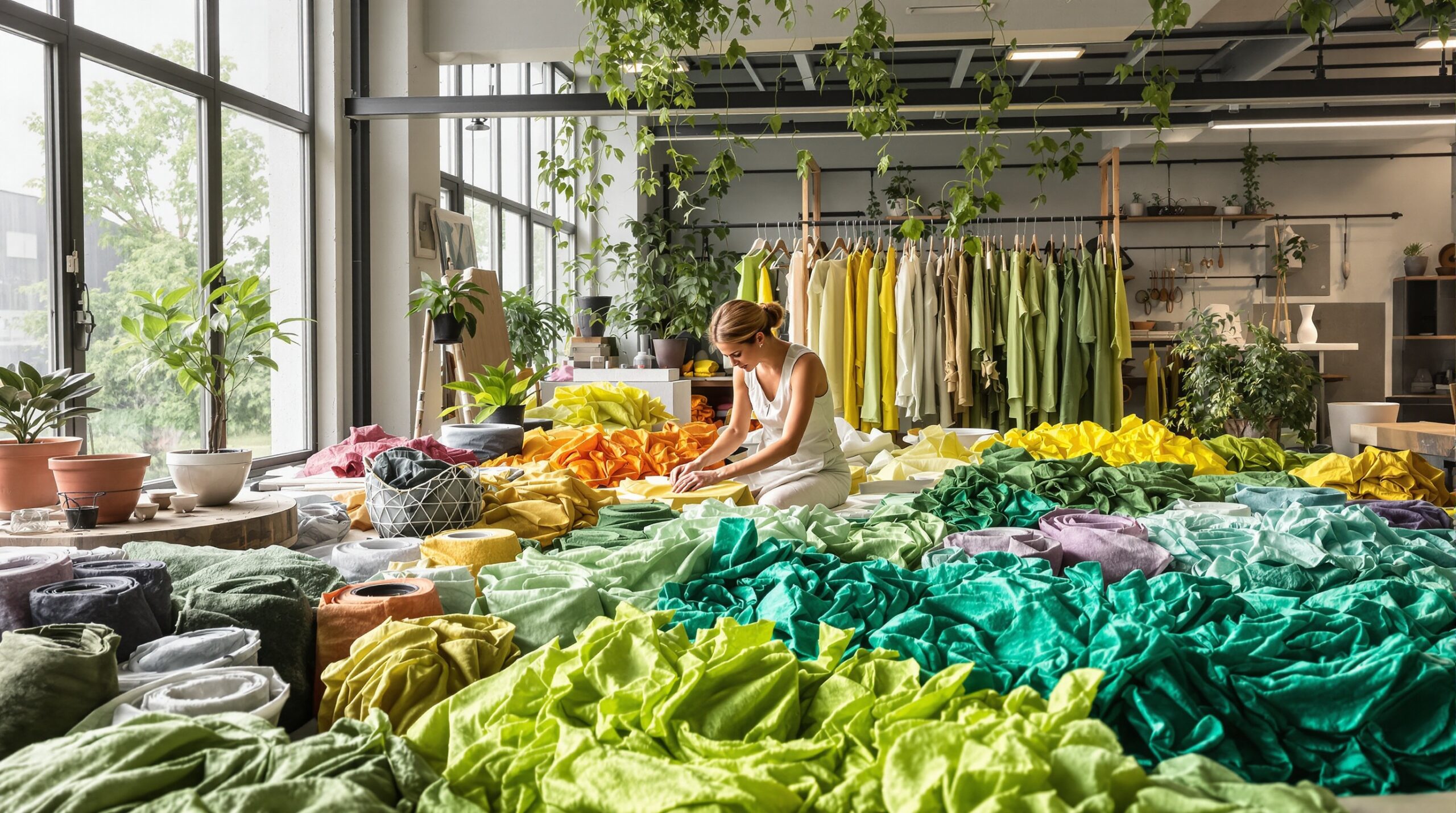Sustainable fashion now stands at the forefront of innovation. Concerns about fast fashion’s impact on the planet have fueled the search for alternatives. Algae-based textiles, once an unlikely source, have taken center stage in this green movement. This surprising material presents a promising path toward environmentally responsible clothing.
The Roots of Sustainable Fashion
Fashion long relied on resource-intensive materials like cotton, wool, nylon, and polyester. These fibers dominate today’s market, though their production drains water, energy, and chemicals. Efforts to develop alternatives began as consumers, scientists, and designers realized the dire need for eco-friendly options. Algae soon emerged as a serious contender.
Algae: An Unlikely Textile Hero
Algae, microscopic aquatic organisms, flourish in both saltwater and freshwater. They multiply rapidly and absorb significant amounts of carbon dioxide. Their natural properties make them a strong candidate for environmentally friendly materials. Companies started experimenting with transforming algae biomass into fibers suitable for weaving and clothing.
How Algae Become Fabrics
To create textile fibers, algae undergo a series of complex processes. Manufacturers harvest and dry the algae biomass. Researchers extract or synthesize polymers such as alginate from this biomass. Using specialized techniques, these biopolymers are spun into fibers, often blended with other materials for durability. By manipulating their properties, developers achieve desired textures and strengths, which are critical for apparel applications.
Environmental Benefits of Algae-Based Textiles
Producing algae-based textiles typically requires less land and freshwater than cotton. Algae thrive in oceans or ponds, sometimes even using wastewater as a nutrient source. During growth, algae absorb climate-warming carbon dioxide, offering a built-in method for carbon capture. The result is a nearly closed-loop production process. Spent biomass can even enrich fertilizer, thus maximizing its lifecycle.
Many algae-based textiles are also biodegradable. This characteristic limits their impact on overflowing landfills or polluted waterways. When clothing made from these fibers reaches the end of its life, it decomposes naturally, reducing long-term environmental harm. Fashion brands aiming to lower their ecological footprints find this attribute compelling.
Challenges in Scaling Algae Textiles
Despite these benefits, transforming algae into mainstream textiles faces considerable hurdles. Harvesting and processing algae at industrial scales remains labor-intensive and costly. Research is ongoing to streamline production pipelines and increase fiber yields. Ensuring consistent quality while maintaining eco-friendly practices adds another layer of complexity.
Algae-based fibers may also have different mechanical properties compared to traditional materials. Fabrics might feel or perform differently, which concerns fashion designers and consumers alike. Continual testing and refinement are vital so these new materials meet comfort, durability, and aesthetic standards.
Economic Considerations for Widespread Adoption
Scaling up algae-based textiles demands significant investment in research, infrastructure, and market development. Small startups lead much of the innovation today, but larger corporations are watching closely. As technology matures and production methods improve, market prices could drop, increasing accessibility for more brands and consumers.
Pioneering Brands and Key Innovations
A handful of startups and forward-thinking brands have brought algae textiles to market. Companies like Algiknit, Algreen, and Bloom are making headlines. Algiknit develops fibers spun from kelp, a type of seaweed, while Algreen focuses on microalgae grown through photobioreactor systems. Bloom creates flexible foams from algae biomass for shoes and accessories.
These pioneers often collaborate with designers to create unique, limited-edition pieces. Such efforts raise awareness and highlight the exciting design possibilities of algae-based textiles. Fashion shows, exhibitions, and media features amplify the message and build consumer interest.
Product Examples in Modern Wardrobes
One of the earliest mass-market algae-based products came in the form of footwear. Some running shoes now incorporate algae-based foams, reducing petroleum plastic content and environmental footprint. T-shirts, dresses, and scarves crafted from algae blends have entered the luxury and eco-conscious markets, offering sensory softness and innovative aesthetics.
Consumer Perceptions and Acceptance
Educating consumers about algae-based textiles remains a challenge. Many people are unfamiliar with how these materials are made or their benefits. Clear labeling, transparent sourcing, and marketing campaigns have gradually changed perceptions. Influencers and celebrities wearing algae-based clothes help normalize the idea and spark conversations.
Early adopters often cite environmental benefits and novelty as reasons for their purchase. As word spreads, more consumers demand sustainable options that do not sacrifice style or performance. The storytelling around algae textiles—highlighting environmental impact and cutting-edge science—resonates with younger, climate-conscious shoppers.
The Broader Impact of Algae Textiles
The success of algae-based textiles signals a broader shift in material science and the fashion industry’s approach to sustainability. Transforming unconventional sources into everyday essentials challenges existing supply chains and encourages more circular economies. Well-designed algae-based solutions can inspire similar advances in other sectors, including packaging, architecture, and automotive design.
Moreover, breakthroughs in processing and scaling techniques developed for fashion will benefit multiple industries. The global effort to reduce resource consumption finds a formidable ally in such innovative materials. Algae-based textiles may soon expand beyond clothing and take root in household goods, interiors, or medical applications.
Looking Forward: Next Steps for Algae in Fashion
Continued investment in research remains essential. Advancements in biotechnology, chemistry, and manufacturing will further expand algae’s potential sustainably. Governments and NGOs can support these developments through funding, policies, and educational programs. Partnerships among scientists, artisans, designers, and brands will drive adoption at greater scales.
Fashion’s future may depend on how quickly these green innovations reach mass markets. As consumers become increasingly aware, demand for transparently sourced, innovative, and sustainable materials will only rise. Algae-based textiles, though still emerging, hold promise for cleaner closets and a healthier planet.
Conclusion: A New Era for Eco-Friendly Clothing
The journey of algae-based textiles highlights both challenges and hope for sustainable fashion. From the laboratory to the runway, algae fibers represent a new era. By embracing such intriguing materials, the fashion industry moves closer to circular, mindful production. Tomorrow’s wardrobes may look greener, thanks in part to the humble algae.

